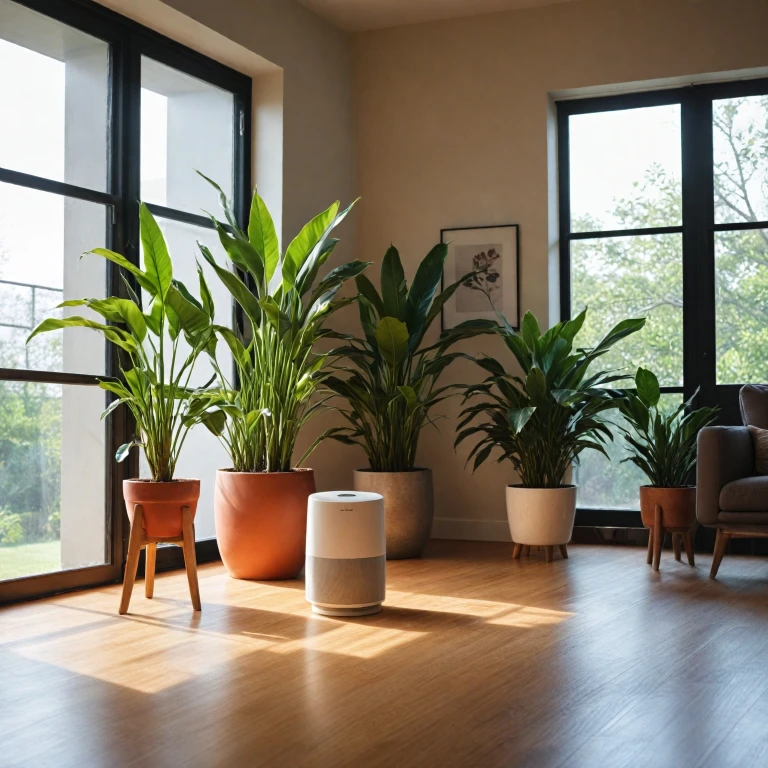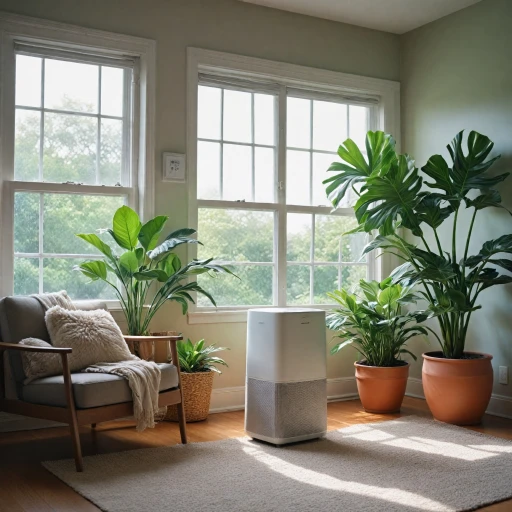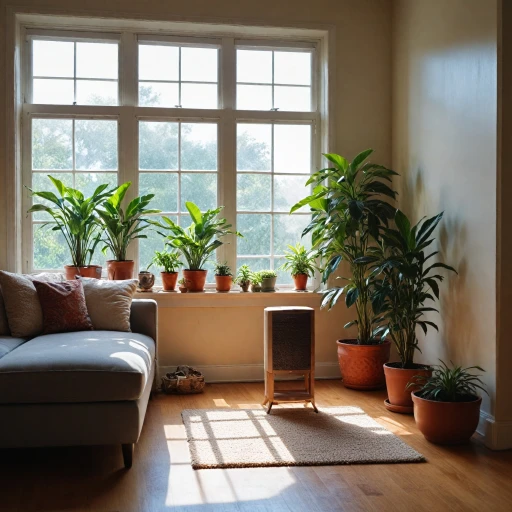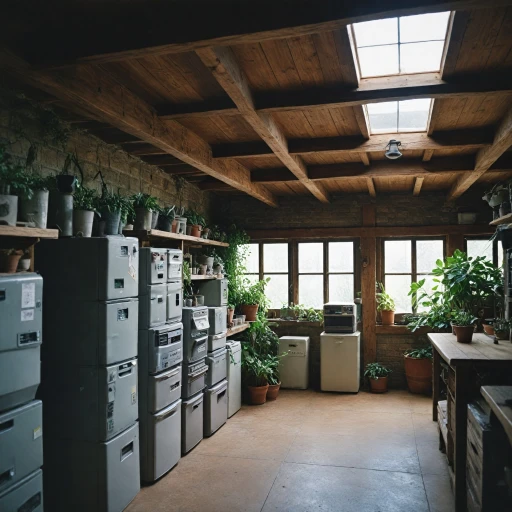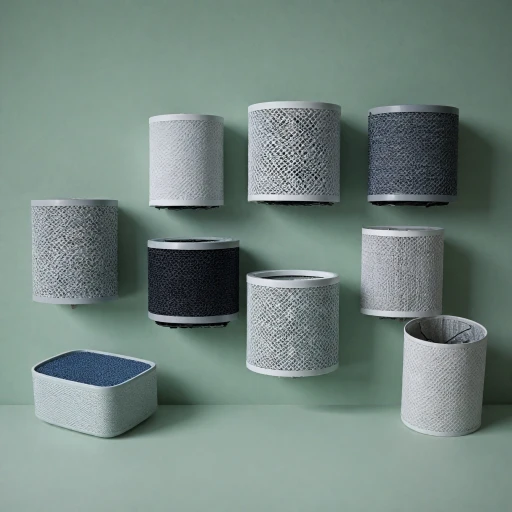Understanding Formaldehyde and Its Health Risks
Formaldehyde is a colorless, strong-smelling organic compound commonly found in building materials and household products. It can be sourced from pressed wood products, glues, and even some insulation materials. As a volatile organic compound (VOC), it presents a significant concern for indoor air quality. Prolonged exposure to formaldehyde can cause adverse health effects, ranging from irritation of the skin, eyes, nose, and throat, to more severe respiratory issues.
Due to its pervasive presence, the need to maintain a healthy environment—whether it be at home, work, or in educational settings—becomes paramount. Ensuring that the air you breathe is free from harmful particles, pollutants, and specifically formaldehyde, can be achieved through the right selection and use of air purifiers.
A quality air purifier is equipped with different filters, like a HEPA filter for dust and particles, and an activated carbon filter to effectively address VOCs like formaldehyde. While understanding how purifiers work to remove formaldehyde in section two might offer more technical insight, identifying the best devices with the necessary features in subsequent segments ensures you make an informed choice.
How Air Purifiers Work to Remove Formaldehyde
Mechanisms of Formaldehyde Removal in Air Purifiers
Air purifiers work to improve indoor air quality by targeting various pollutants, including volatile organic compounds (VOCs) like formaldehyde. This chemical can emanate from building materials and household products, posing a health risk when present in high concentrations. Understanding how air purifiers tackle formaldehyde is essential when seeking a solution.Activated Carbon Filters
Activated carbon filters are a common and effective method for formaldehyde removal. These filters use micropores to adsorb gases and odors, trapping volatile organic compounds present in the air in your home. The success of this filtration largely depends on the quality and quantity of activated carbon utilized in the filter.HEPA Filtration
HEPA filters, although primarily designed to capture dust, pet dander, and other fine particles, can play a supportive role in a comprehensive filtration system. While they don't directly remove formaldehyde, HEPA filters enhance overall air quality by reducing particulate matter, allowing specialized filters to focus on gaseous pollutants.Dedicated Systems for Formaldehyde Removal
For those particularly sensitive to this irritant or with higher levels of VOCs, opting for air purifiers specifically designed to remove formaldehyde, like some dyson purifier models, can offer enhanced protection. These products often combine carbon filters with other technologies aimed at VOC-specific filtration. By recognizing the types of pollutants you are facing and choosing the appropriate purifier with the right filters, you can mitigate formaldehyde exposure effectively. If you're unsure whether to prioritize air purifiers or other appliances like dehumidifiers for your indoor environment, consider exploring insights on making informed choices in home purification what you need to know."}Key Features to Look for in an Air Purifier
Critical Elements in Choosing an Effective Formaldehyde Air Purifier
When it comes to purchasing an air purifier, especially for removing formaldehyde—a common and harmful volatile organic compound (VOC)—certain features are non-negotiable. An understanding of these key elements will not only improve your indoor air quality but will also ensure your investment delivers the best results over time.Advanced Filtration Systems
Air purifiers designed to handle formaldehyde effectively must incorporate protective filtration systems. Look for products that feature both HEPA filters and activated carbon filters. While HEPA filters efficiently trap dust and large particles, carbon filters specialize in absorbing VOCs, including formaldehyde. This dual-filtration system ensures comprehensive removal of pollutants and infamous formaldehyde, as they work together to enhance air quality.Smart Features for Efficiency
Smart air purifiers can adjust their settings relative to the pollution levels or air quality detected in the room, making them an intelligent choice. Features like sleep mode ensure quieter performance with minimal noise level during nighttime, whereas app connectivity allows you to monitor air quality parameters in real time even when you're not home.Capacity to Suit Your Space
It's vital to consider an air purifying system with a CADR (Clean Air Delivery Rate) that matches the room size where it will be deployed. A high-quality model, like a Dyson purifier, will list its effective purification area, ensuring that VOCs and other pollutants are adequately removed from all corners of your indoor environment. Let’s not forget about the significance of regular maintenance to preserve optimal filtration. Timely replacing filters maintains the purifier’s performance and extends its longevity. Investing time in understanding these essential aspects of filtration and smart air purifier technology ensures beneficial air purifier choices. With these key insights, the daunting task of picking the right product becomes a straightforward decision that prioritizes health and indoor air safety. Need guidance on ensuring your device handles mold as well? Explore HEPA vacuum choices.Top Air Purifiers for Formaldehyde Removal
Top Picks for Enhancing Indoor Air
When selecting an air purifier specifically for removing formaldehyde and improving air quality in your home, it's crucial to focus on models equipped with advanced filtration technologies. Here's a closer look at some top options renowned for their effectiveness against volatile organic compounds, including formaldehyde.1. Dyson Purifier
Dyson purifiers are celebrated for their innovative designs and dependable performance. They often incorporate a HEPA filter along with a dedicated carbon filter to target specific pollutants. The filtration system is efficient in capturing dust, pet dander, and other particles, while the activated carbon filter works effectively to remove formaldehyde. Pros:- Comprehensive filtration system
- User-friendly with smart air features
- Superior build quality
- Higher price range
- Noise level can vary depending on settings
2. Advanced HEPA and Carbon Filtration
Any air purifier that promises to tackle formaldehyde should include a robust filtration mechanism. Look for products featuring both HEPA and activated carbon filters. These purifiers can successfully remove tiny particles and harmful VOCs emitted from common household items. Pros:- Effective particle and pollutant removal
- Improves overall indoor air quality
- Multiple sizes available for different needs
- Maintenance time can increase with complex systems
- Sale price can be a bit steep compared to simpler purifiers
3. Smart Air Models
Smart air purifiers bring technology to the forefront with features like auto mode, sleep mode, and app connectivity to monitor real-time air quality. These models are ideal for those seeking convenience and efficiency that fits seamlessly into modern lifestyles. Pros:- Real-time monitoring of air quality
- Integrated controls for easy operation
- Quiet operation suitable for all times of the day
- Initial cost of smart models can be higher
- Require a strong WiFi connection for optimal functions
Maintaining Your Air Purifier for Optimal Performance
Ensuring Long-Lasting Efficiency
Regular maintenance of your air purifier is key to keeping your indoor air free from pollutants like formaldehyde. Over time, filters can become clogged with particles, diminishing the purifier's effectiveness. Here are some tips to maintain optimal performance:- Regular Filter Replacement: Filtration systems, especially HEPA and activated carbon filters, should be replaced as per the manufacturer's recommendations, often every 6 to 12 months. This ensures your purifier efficiently captures dust, pet dander, and volatile organic compounds (VOCs).
- Clean Pre-Filters: Many purifiers, including popular models like Dyson purifiers, come with pre-filters that trap large particles. Regular cleaning, such as vacuuming or washing, can enhance their lifespan.
- Check and Clean Sensor: If your air purifier has a smart air quality sensor, ensure it remains clean for accurate readings. Dust accumulation can interfere with its ability to detect indoor air pollution effectively.
- Monitor Noise Levels: A change in noise level during operation could indicate a need for maintenance. Unusual sounds might point to clogged filters or motor issues, requiring attention.
- Utilize Various Modes: Features such as sleep mode not only conserve energy but also extend the lifetime of filters by adjusting purification intensity according to air quality needs.
Additional Strategies to Reduce Formaldehyde in Your Home
Reducing Formaldehyde in Your Living Space
Formaldehyde is a common volatile organic compound (VOC) found in many household products. While using an air purifier with a HEPA filter and activated carbon is effective in removing formaldehyde, there are additional strategies you can implement to further improve indoor air quality.- Choose Low-Formaldehyde Products: Opt for household items and building materials labeled as low VOCs or formaldehyde-free to limit the introduction of pollutants.
- Ensure Proper Ventilation: Regularly ventilate your home by opening windows or using exhaust fans to expel indoor air pollutants and improve air circulation.
- Use Houseplants: Some houseplants, such as spider plants and aloe vera, are known for their ability to absorb VOCs, including formaldehyde, and improve air quality naturally.
- Invest in Air Quality Monitors: Keeping track of VOC levels in your home can help you identify pollution sources and determine the effectiveness of your existing air filtration system.
- Avoid Smoking Indoors: Tobacco smoke is a significant source of formaldehyde and should be kept outside to maintain a healthier indoor environment.
- Control Humidity Levels: High humidity can exacerbate formaldehyde emissions, so maintaining a balanced humidity level through dehumidifiers or air purifiers with humidity control features can help.
